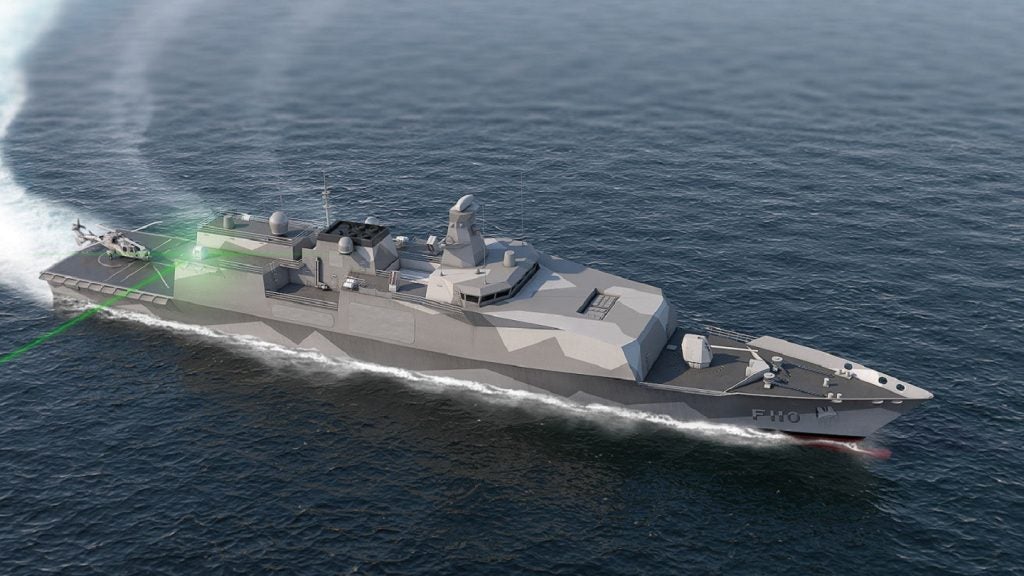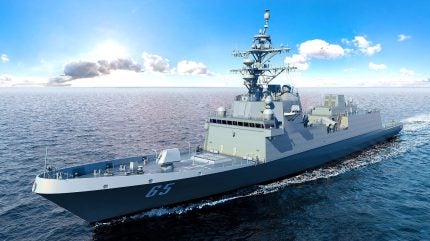
Analysis of the US Government Accountability Office’s (GAO) report into the failings of the US Navy’s Constellation-class frigate programme, detailing incomplete designs and the build of the first-in-class being “at a standstill”, indicate concerning similarities with the ill-fated Littoral Combat Ship (LCS).
It would be grimly ironic should the Constellation programme suffer similar issues as seen in the twin variant LCS project, the class of warships the future frigate is intended to replace.
As with early-build LCS, the Constellation programme is also suffering from an incomplete design, with the build of the first-in-class recently described by the GAO as being “at a standstill”.
Key among this is an apparent increase in the anticipated displacement of the Constellation-class guided missile frigates (FFG), which were thought to be based heavily on the Italian-French FREMM frigates that have been in service for several years.
The LCS programme too suffered through weight increases through the early build warships.
However, despite selecting a mature design and the adoption of an ‘in-service’ model for much of its systems, the design of the Constellation class is still to be finalised, years after construction began on the eponymous first-in-class vessel.
The similarities with some of the early troubles that plagued the LCS programme indicate a failing of the US Navy to effectively plan for the design and build its warships.
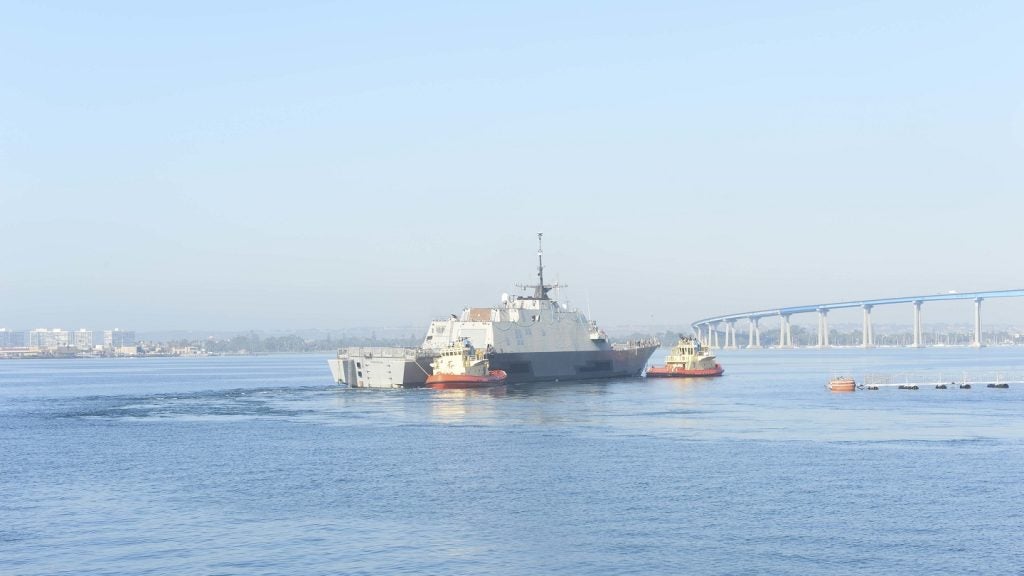
In the wake of the GAO report, Shelby Oakley, GAO’s director responsible for assessing Navy shipbuilding programmes, told Naval Technology that there was a risk that early Constellation frigates could suffer similar difficulties as the early LCS Freedom and Independence variants, departing service after just a few years, effectively operating as trials vessels.
“As construction delays mount and delivery dates get extended, the [US] Navy increasingly risks finding that the capabilities, systems, and technologies planned for the Constellation class don’t meet the fleet’s ever-evolving mission needs.
“Similarly, the initial ships of a class are the ones most exposed to the perils of entering construction prior to attaining a stable design,” Oakley said.
Oakley said that in the LCS programme, this showed up as “unmitigated weight growth” and “persisting technical deficiencies” across the first several ships of both design types, which saw a reduction in ships’ capabilities and constrained their readiness for mission taskings.
“Such a recurrence in the Constellation class programme is entirely possible,” Oakley said.
Resisting the “urge to tinker”
To an outsider, one of the potential issues could be caused by the concurrent build and design of a platform, which sees an incomplete design struggling to stay ahead of the construction process. The GAO stated the Constellation design is still incomplete, more than one year after the build of the first-in-class began.
Mark Cancian, senior adviser with the CSIS International Security Program, told Naval Technology the practice of current development production was “extremely risky”, opening potential issues further down the line.
“They assume that changes during the design and testing process will be minor and easily incorporated into finished systems. When the F-35 [stealth fighter] was acquired using concurrent development and production, Frank Kendall, then Undersecretary for Acquisition, Technology, and Logistics, called it ‘acquisition malpractice’,” Cancian said.
Lead frigate 3D modeling progress by Grand Module, as of October 2023
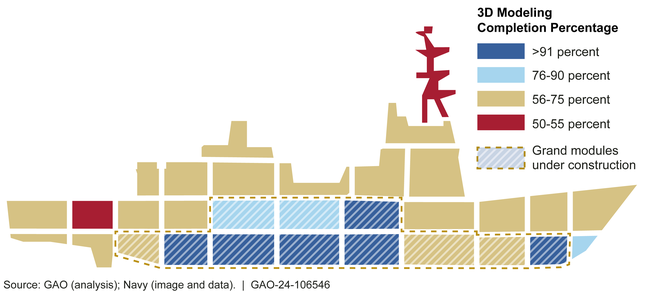
Cancian said the “urge to tinker” with a fixed design was “almost irresistible to acquisition bureaucracies”, with other US procurement programmes such as the failed new Presidential helicopter falling foul of this same problem.
“The [US Presidential helicopter] design was based on an existing Lockheed Martin helicopter, but the White House made so many changes, that the programme collapsed in cost increases and schedule delays,” Cancian warned.
Is there a risk of early Constellation frigates retiring early?
A consequence of delays in completing ship design have created mounting construction delays for the programme, with the US Navy acknowledging that the planned April 2026 delivery date of first-in-class USS Constellation – which was set in the contract at the award – is unachievable.
The USS Constellation (FFG 62) is now likely to be delayed by 36 months, meaning a delivery scheduled for the April 2029 timeframe. Construction began on the ship in August 2022, meaning a more than seven-year span between manufacturing start and delivery.
Despite basing the new frigate on the existing European FREMM, considerable changes have been asked for in order to accommodate US Navy specifics, which has seen the design lengthened by over 23ft, the topside undergo a redesign, the integration of different hull plating, and the development of a new machinery control system, the GAO reported.
For Cancian, there was a risk that early Constellation frigates could suffer through being finished to an incomplete design. In one scenario, this would see early vessels operating potentially as effective trials ships ahead of ‘1.0’ release further down the programme’s production.
“Unfortunately, yes, this is possible. The LCS is not the only example. The early production aircraft in the F-22 [Raptor air dominance fighter] and V-22 [tiltrotor] programmes were retired early because the final design was so different it was not worthwhile modifying the early production items.
“That could easily happen to the Constellation programme,” Cancian warned.
Despite warnings, US Navy continues Constellation orders
In May, Marinette Marine was awarded a more than $1bn fixed-price modification to exercise options for the detail design and construction of the next two Constellation-class guided missile frigates (FFG 66 and FFG 67) due to enter service with the US Navy.
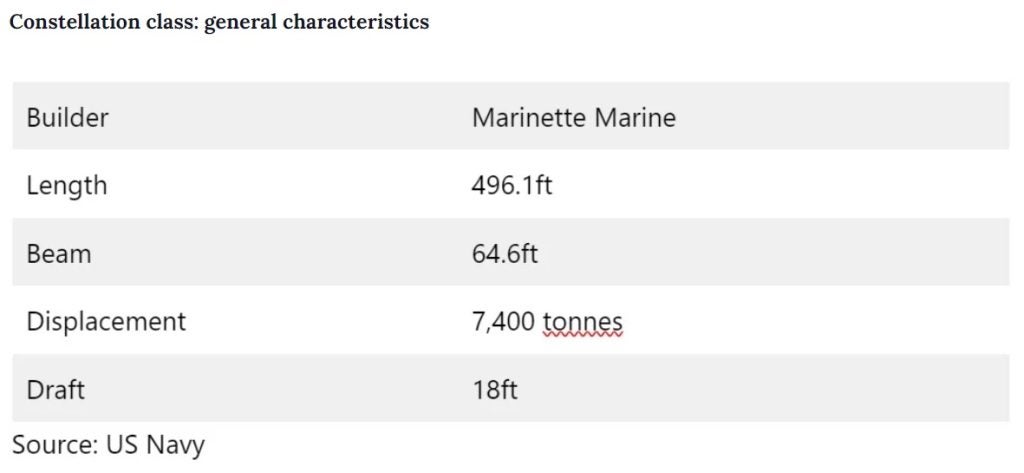
This places six Constellation-class guided missile frigates under contract with the US Navy, with four now on option. The type will be delivered initially as a batch of ten vessels, which will be expanded to deliver a 20-ship class of frigates once completed.
One of the specific reasons for the development of the Constellation-class FFGs was due, in part, to the failings of the LCS, the GAO stated in its report.




